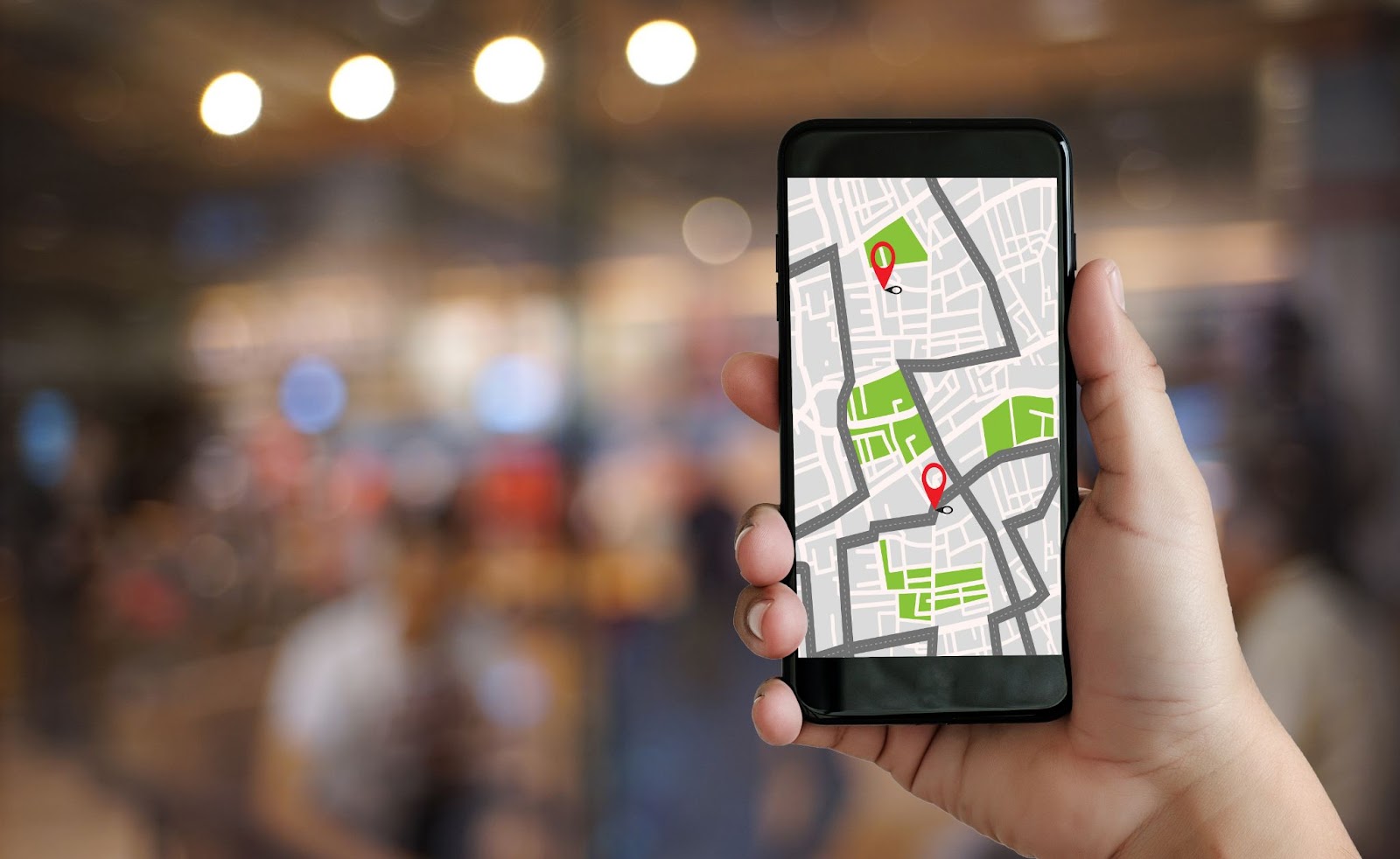Avoid These 5 Common Campus Wayfinding Mistakes
Picture this: It's the first day of classes at your university. You're armed with a backpack full of textbooks, a map of campus in hand, and a head full of nerves as you navigate the maze of buildings and pathways to find your classroom.
Sound familiar? For many college students, the struggle of navigating a sprawling campus is all too real. This is why effective campus wayfinding is essential for students, faculty, and visitors alike, yet all too often, universities fall short in this department.
Not enough digital signage, inconsistent branding, and unnecessary content are just some of the typical wayfinding mistakes colleges tend to make because, in most cases, they’re still stuck in the past when it comes to navigational resources.
To ensure a more accessible, modern campus in your higher learning environment, let’s explore five common campus wayfinding mistakes that universities tend to make and, more importantly, how to avoid them.
Wayfinding Mistake #1: Lack of Wayfinding Resources
Imagine wandering through a labyrinth of buildings, desperately searching for your next class, only to find yourself more lost than ever. This scenario is all too common on campuses lacking clear wayfinding resources, such as digital signage, interactive kiosks, or even mobile applications.
In today’s modern campus, universities need more than just installing a few arrow signs or scattered map stations. Without proper wayfinding resources, students and visitors can easily become disoriented and frustrated, leading to unnecessary stress and delays.
-
Mistake Overview: One of the most common campus wayfinding mistakes is a lack of wayfinding resources. Without an abundance of wayfinding options, students and visitors can easily become disoriented and frustrated.
-
Why It's Made: Universities may overlook signage in favor of other priorities or assume that students will eventually figure out their way around.
-
Why It's Ineffective: Without clear signage, students waste time and energy trying to find their destinations, leading to stress and tardiness.
-
How to Avoid: Invest in clear, visible digital signage displays at heavy foot traffic locations across campus, including building entrances, major intersections, and parking lots.
-
Alternative Solution: Implement digital wayfinding kiosks or interactive maps that can be accessed via smartphone and provide real-time directions or updates.

Wayfinding Mistake #2: Inconsistent Signage Design
Walking through a campus where every department has its own unique signage design usually results in a chaotic mishmash of colors, fonts, and styles. Inconsistent digital signage design not only creates visual clutter but can also confuse students as they attempt to navigate their way through campus.
-
Mistake Overview: Inconsistent signage design and presentation can confuse and disorient students as they navigate campus.
-
Why It's Made: Different departments or areas of the university may design their own signage without considering the overall campus aesthetic.
-
Why It's Ineffective: Inconsistent signage design creates visual clutter and makes it difficult for students to identify important landmarks or buildings.
-
How to Avoid: Establish brand guidelines for all digital wayfinding signage designs that reflect the university's branding.
-
Alternative Solution: Be sure to use consistent typography, colors, and iconography across all signage to create a cohesive and recognizable digital wayfinding system.
Wayfinding Mistake #3: Lack of Accessibility Features
Navigating a campus as a student with mobility challenges tends to mean encountering obstacles at every turn – stairs without ramps, narrow doorways, and inaccessible restrooms. Universities also need to take foreign students into account with their wayfinding, as non-English-speaking students will struggle to find their way if only provided with wayfinding content that’s entirely in English.
For many universities, the oversight of accessibility features in their campus wayfinding design and resources is a glaring mistake. By neglecting the needs of individuals with disabilities or students who aren’t fluent in English, campuses not only fail to comply with legal requirements but also exclude a significant portion of their student body from fully participating in campus life.
-
Mistake Overview: Failure to incorporate accessibility features or resources into campus wayfinding design can pose significant challenges for students with disabilities.
-
Why It's Made: Universities may overlook accessibility requirements or prioritize aesthetics over functionality in their wayfinding design and presentation decisions.
-
Why It's Ineffective: Failing to provide students with disabilities wayfinding solutions that inform them of more accessible routes may dissuade them from fully participating in campus life and accessing essential resources.
-
How to Avoid: Conduct accessibility audits with all campus wayfinding resources and consult with disability services to ensure campus wayfinding designs meet the needs of all students.
-
Alternative Solution: Ensure digital wayfinding resources are accessible in a wide variety of languages or braille, and make sure all digital campus maps include routes that are accessible to everyone.
Wayfinding Mistake #4: Poor Lighting & Visibility
Picture walking through a dimly lit campus after sunset, squinting to read digital signage, and feeling uneasy about your surroundings. Poor lighting not only compromises safety but also hinders wayfinding efforts on campus.
Yet, many universities overlook the importance of adequate lighting in their wayfinding strategy, leading to increased risks of accidents and decreased visibility for students and visitors alike.
-
Mistake Overview: Inadequate lighting and visibility impair wayfinding efforts on campus and compromise safety for students and visitors.
-
Why It's Made: Universities may prioritize energy savings or overlook the importance of lighting in their budget allocations.
-
Why It's Ineffective: Poor lighting increases the risk of accidents and makes it difficult for students to navigate campus, especially during evening hours.
-
How to Avoid: Upgrade outdoor lighting fixtures surrounding any and all wayfinding resources and ensure adequate illumination in key digital wayfinding stations, such as pathways, parking lots, and building entrances.
-
Alternative Solution: Install motion-sensor lights, LED fixtures, and directional lighting to improve visibility and enhance safety on campus.
Wayfinding Mistake #5: Neglecting Digital Wayfinding Solutions
Imagine trying to find your way around campus using a paper map or static signage in the smartphone era. It's like using a horse-drawn carriage on the highway. Yet, many universities continue to neglect the potential of digital wayfinding solutions in enhancing campus navigation.
By embracing digital technologies, such as mobile apps and interactive maps, universities can provide students with real-time guidance, personalized directions, and up-to-date information, revolutionizing the wayfinding experience and improving overall satisfaction.
-
Mistake Overview: Failure to adopt digital wayfinding solutions limits students' access to real-time guidance and personalized directions on campus.
-
Why It's Made: Universities may resist change or lack awareness of the benefits of digital wayfinding technologies.
-
Why It's Ineffective: Static signage and paper maps cannot provide real-time updates or personalized directions, leading to inefficient navigation and frustration for students.
-
How to Avoid: Invest in digital wayfinding platforms and mobile apps that offer interactive maps, scannable QR codes, GPS navigation, and location-based services for students and visitors.
-
Alternative Solution: Partner with a reputable wayfinding technology provider to develop customized digital wayfinding solutions that meet the specific needs and preferences of the university community.

Upgrade Your Campus Wayfinding With Oppna Digital
Effective campus wayfinding is essential for ensuring that students, faculty, and visitors can navigate campus safely and efficiently. By avoiding common wayfinding mistakes such as lack of digital signage, inconsistent design, and poor accessibility, universities can create a more welcoming and inclusive environment for all.
At Oppna Digital, we specialize in designing innovative campus wayfinding solutions that aim to enhance navigation and improve the overall student experience. Contact us today to learn more about how we can help your university avoid these common mistakes and create a campus that's easy to navigate for everyone!